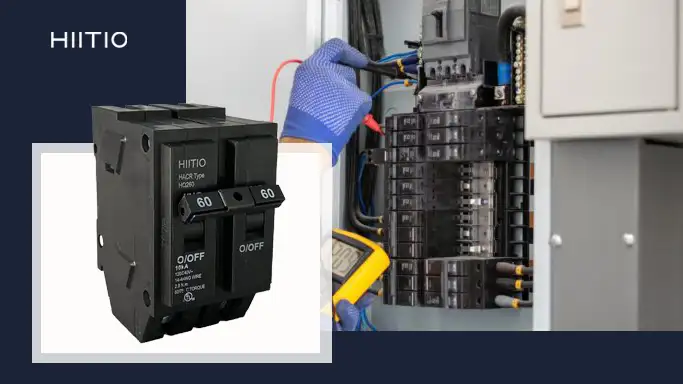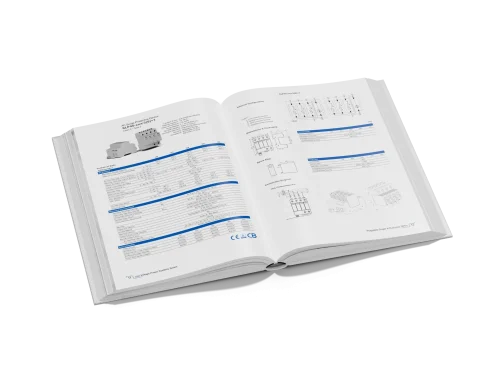Modern homes are electrical ecosystems: lighting, convenience outlets, HVAC, kitchen appliances, and newly common loads such as home energy storage share the same service entrance and distribution equipment. Protecting those circuits against overloads, short circuits, and hazardous arcing is a basic safety requirement — and the miniature circuit breaker (MCB) remains the frontline device for that protection.
In North America, UL-listed plug-in MCBs offer a combination of code compatibility, installer convenience, and reliable performance that make them especially well-suited to residential branch circuits.
What is a UL plug-in MCB
A plug-in MCB is a branch-circuit circuit breaker designed to plug directly into a compatible load center or panel chassis, rather than being bolted or clipped to a DIN rail. When UL-listed (for example under UL 489 for branch-circuit protection), these breakers are tested to interrupt overcurrents safely, provide positive trip characteristics, and meet mechanical and thermal endurance standards used in residential and light-commercial service panels. Plug-in designs are commonly available in 1-pole (120 V) and 2-pole (120/240 V) variants and cover the typical residential range from small branch ratings (15 A, 20 A) up to higher loads used for appliances and subpanels.

Why plug-in MCBs matter in homes
- Fast installation & replacement — plug-in breakers mount quickly and can be swapped without tools in many panel systems, reducing labor time for electricians and simplifying field service.
- Space-efficient form factor — plug-in MCBs are compact, helping manufacturers and panel builders optimize space inside load centers while still offering standard ampere ranges.
- UL safety assurance — UL testing provides buyers and installers confidence that the breaker will trip when it must and withstand fault stresses specified by North American standards.
- Resettable and reusable — unlike fuses, an MCB can be reset after a transient overload, which reduces maintenance cost and downtime for homeowners.
- Compatibility with modern protection needs — many plug-in MCB platforms support auxiliary and shunt trip accessories, and some product lines integrate AFCI/GFCI functions or are available in tandem with these protections, meeting evolving NEC requirements.
Protecting lighting circuits
Lighting circuits are typically 15-amp or 20-amp 120-V circuits. The primary risks are overloads from excessive fixture loads or short circuits caused by damaged wiring or connections. Key reasons UL plug-in MCBs are appropriate for lighting include:
- Correct trip curves for common loads — thermal/magnetic trip elements protect long, lightly loaded lighting runs from sustained overload while also responding quickly to short circuits.
- Reduced nuisance maintenance — modern UL breakers are designed and tested to avoid nuisance trips while still protecting conductors and fixtures.
- Easy labeling and zoning — plug-in breakers simplify panel organization, making it easier for electricians to group lighting circuits in load centers for clearer maintenance and future expansion.
Best practices for lighting: size breakers to match conductor ampacity, follow the NEC rules for outlet spacing and lighting calculations, and use AFCI protection in living spaces where required by code.

Image Source: https://etc.usf.edu/clipart/86700/86732/86732_series-lighting-circuits.htm
Protecting receptacle circuits
Receptacle circuits serve general loads — from lamps and chargers to kitchen small appliances. Key considerations:
- Correct ampere selection — most general-use receptacle circuits are 15 A or 20 A; the breaker must match cable ampacity and expected load. NEC guidance and local code requirements determine permitted outlet counts and special circuits (kitchen, laundry, small appliance circuits).
- AFCI & GFCI were required — arc-fault circuit interrupter (AFCI) protection and ground-fault protection (GFCI) are now commonly required by NEC in many dwelling locations; plug-in breakers that integrate AFCI/GFCI functions provide full-circuit protection in the breaker, often preferred where whole-circuit protection is required.
- Tamper resistance and labeling — while tamper-resistant receptacles address user safety at outlets, the panel-side protection must still be correctly sized and labeled to make maintenance safe and predictable.
Protecting large appliances
Appliances — ovens, dishwashers, clothes dryers, HVAC units — often demand higher currents and sometimes 240-V service. For these loads:
- Higher-amp plug-in options — some plug-in MCB lines offer 30 A, 40 A, and higher ratings to cover standard appliance circuits; proper matching of breaker type to appliance nameplate and cable gauge is essential.
- Two-pole breaker coordination — 2-pole plug-in breakers protect multiwire branch circuits and provide common trip behavior for multi-leg loads. UL-listed two-pole designs ensure simultaneous interruption when necessary.
- Short-circuit interrupting capacity — residential fault currents are generally lower than industrial, but breakers still must provide sufficient interrupting rating (IR). Many UL plug-in residential breakers offer 10 kA or higher IRs to handle service-side faults safely.
Installation, maintenance, and lifecycle benefits
- Panel and builder advantages — plug-in breakers streamline panel assembly for OEMs and panel builders since they eliminate extra fastening steps and reduce assembly time.
- Field serviceability — quick replacement of failed or upgraded breakers—especially in retrofit or remodel scenarios—reduces homeowner disruption and labor costs.
- Long-term reliability — a UL listing implies mechanical endurance and trip-curve consistency over many cycles, translating to predictable maintenance intervals and fewer surprises for homeowners.
INSTALLATION OF HIITIO UL PLUG-IN MCB


Common myths and practical clarifications
- “Plug-in breakers are less safe than bolt-on.” Not true when both are UL-listed for the same application. The mounting style affects mechanical retention but not the intrinsic trip performance; UL testing covers mounting integrity and electrical safety. Choose the correct panel/breaker pairing and follow manufacturer instructions.
- “All MCBs are interchangeable.” Breaker footprints can differ between panel families. Plug-in breakers must be compatible with the load center manufacturer’s bus design. Always use breakers approved for the specific panel brand or listed as suitable replacements.
Specifying the right UL plug-in MCB for a home
When selecting breakers for residential projects, specify:
- Appropriate amp rating that matches conductor sizing and expected load.
- Correct pole configuration (1-pole for 120 V lighting/outlets; 2-pole for 240 V appliances and multiwire circuits).
- Needed special protection (AFCI/GFCI/shunt trip/auxiliary contacts) based on NEC requirements and homeowner safety preferences.
- Sufficient interrupting rating (IR) for the service location — many residential plug-in MCBs offer 10 kA IR, but higher short-circuit capacities may be specified depending on service size and local utility fault levels.
UL plug-in MCBs combine the proven electrical protection of UL-tested breakers with installer-friendly form factors that speed panel assembly and field service. For lighting, receptacles, and appliance circuits in homes, they deliver predictable trip behavior, resettable protection, and accessory options that help contractors meet NEC requirements while reducing installation time. Choosing the right UL plug-in breaker — sized correctly, with required AFCI/GFCI features, and matched to the panel — is an easy way to improve circuit safety without complicating design or maintenance.

EXPLORE MORE HIITIO UL PLUG-IN MCB
Keep your home safe with HIITIO UL Plug-in MCBs
When you specify HIITIO HQ Series UL Plug-in MCBs, you get a product family engineered for North American residential panels with proven interrupting performance, compact plug-in form factors, and a broad current range to protect everything from lighting circuits to large appliances.
HIITIO breakers are UL-listed, offer 10 kA (or higher where specified) interrupting ratings, and are available in 1-pole and 2-pole configurations with accessory options for AFCI/GFCI and shunt-trip integration — making them an easy, code-aware choice for builders, electricians, and OEM panel manufacturers. Contact HIITIO to explore the HQ Series specifications, panel compatibility guides, and ordering options — and protect what matters most in the homes you build or service.





